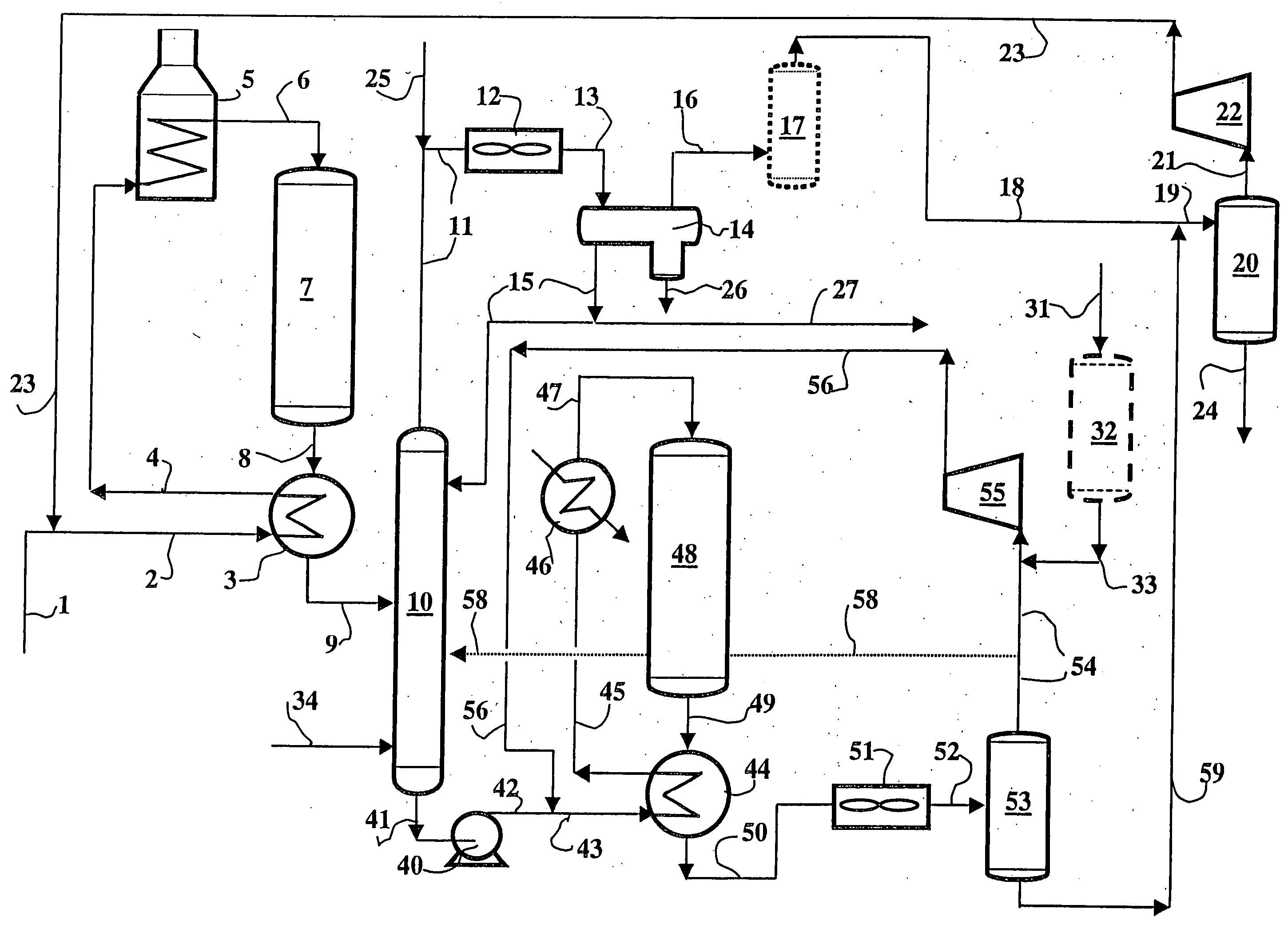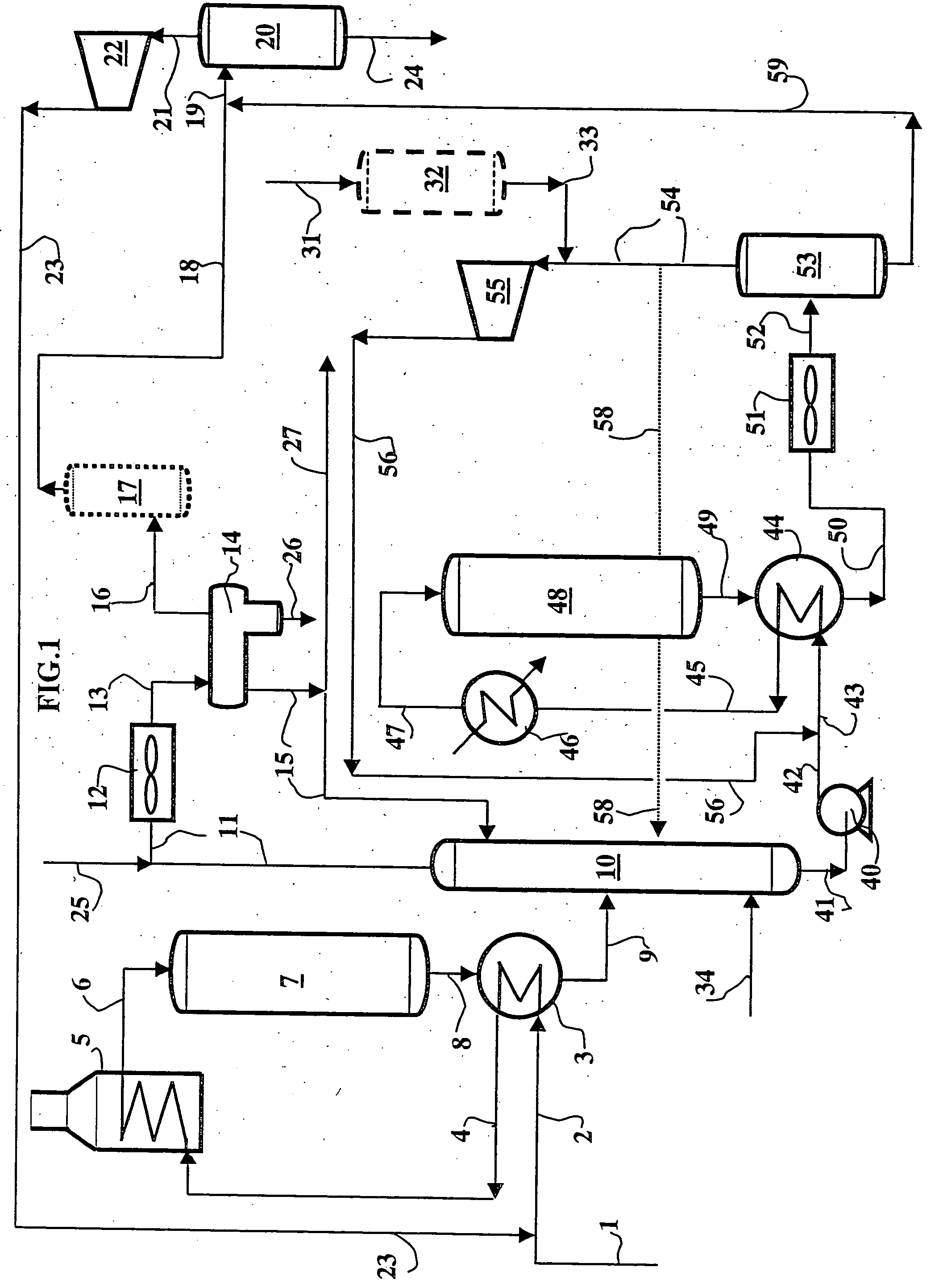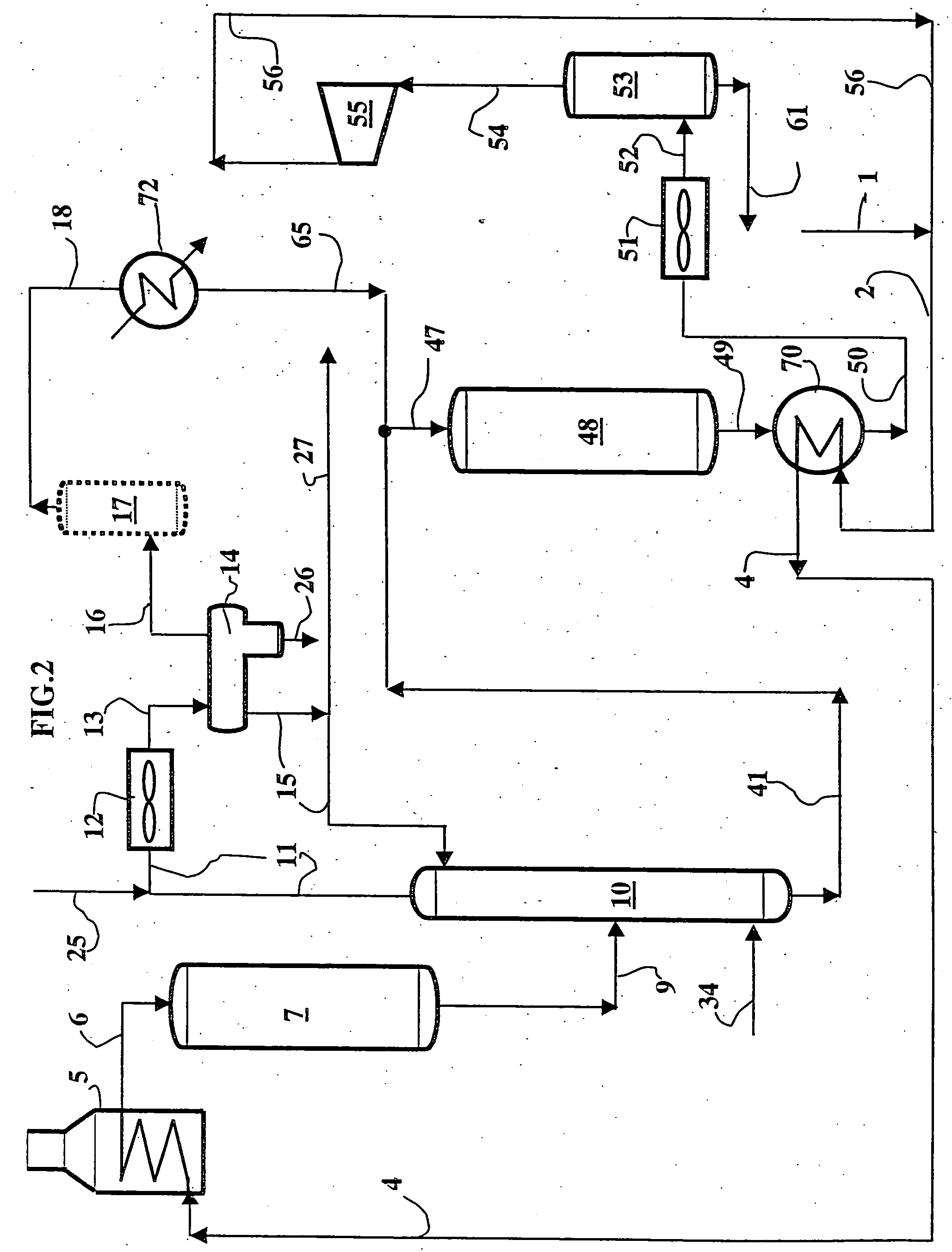Two-step method for hydrotreating of a hydrocarbon feedstock comprising intermediate fractionation by rectification stripping
a hydrocarbon feedstock and fractionation technology, applied in the direction of hydrocarbon distillation, hydrocarbon distillation control/regulation, aromatic hydrocarbon hydrogenation, etc., can solve the problems of high energy consumption, increased cost and impurity resistance, and excessive column bottom temperatur
- Summary
- Abstract
- Description
- Claims
- Application Information
AI Technical Summary
Benefits of technology
Problems solved by technology
Method used
Image
Examples
example 1
[0234] Feed treated: straight run gas oil with the following characteristics:
[0235] distillation interval (5%-95% distilled): 210-370° C.;
[0236] density: 0.85;
[0237] sulphur content: 10000 ppm;
[0238] cetane index: 48
[0239] Operating Conditions in First Step a1):
[0240] catalyst: HR416 Co—Mo on alumina catalyst sold by AXENS (formerly PROCATALYSE);
[0241] reactor outlet temperature: 350° C.;
[0242] reactor outlet pressure: 4.2 MPa;
[0243] H2 partial pressure, reactor outlet: 2.5 MPa;
[0244] HSV (hourly space velocity): 2.0 h−1;
[0245] hydrogen (reactor inlet+quench): 200 Nm3 / m3 of feed;
[0246] hydrogen consumed in step a1): 0.5% by weight with respect to feed;
[0247] Operating Conditions in Step a2):
[0248] stripping column inlet temperature: 320° C.;
[0249] stripping column inlet pressure: 4.0 MPa;
[0250] number of theoretical plates above supply: 9;
[0251] number of theoretical plates below supply: 15
[0252] nature of reflux: portion of light hydrocarbon liquid fraction (sulph...
example 2
[0272] The feed, first reaction step a1), and stripping step a2) were identical to Example 1. Example 2 differs from Example 1 in using in the reaction step a3) a noble metal platinum / palladium on alumina type catalyst.
[0273] Operating Conditions for Second Reaction Step a3):
[0274] Catalyst: platinum / palladium on alumina, containing, as a % by weight:
[0275] 0.23% of platinum; 0.84% of palladium; 1.13% of chorine; 4.20% of fluorine.
[0276] reactor inlet temperature: 315° C.;
[0277] reactor outlet temperature: 335° C.;
[0278] reactor outlet pressure: 4.9 MPa;
[0279] HSV: 4.3 h−1;
[0280] hydrogen (inlet+quench): 350 Nm3 μm3 of feed for step a3);
[0281] the following results were obtained for this hydrotreatment of step a3) of Example 2:
[0282] sulphur content of the hydrotreated liquid fraction: 8 ppm;
[0283] sulphur content of total reconstituted liquid effluent: hydrotreated liquid fraction+light hydrocarbon liquid fraction takeoff: 8 ppm;
[0284] cetane index of total reconstitute...
PUM
 Login to View More
Login to View More Abstract
Description
Claims
Application Information
 Login to View More
Login to View More - R&D
- Intellectual Property
- Life Sciences
- Materials
- Tech Scout
- Unparalleled Data Quality
- Higher Quality Content
- 60% Fewer Hallucinations
Browse by: Latest US Patents, China's latest patents, Technical Efficacy Thesaurus, Application Domain, Technology Topic, Popular Technical Reports.
© 2025 PatSnap. All rights reserved.Legal|Privacy policy|Modern Slavery Act Transparency Statement|Sitemap|About US| Contact US: help@patsnap.com



